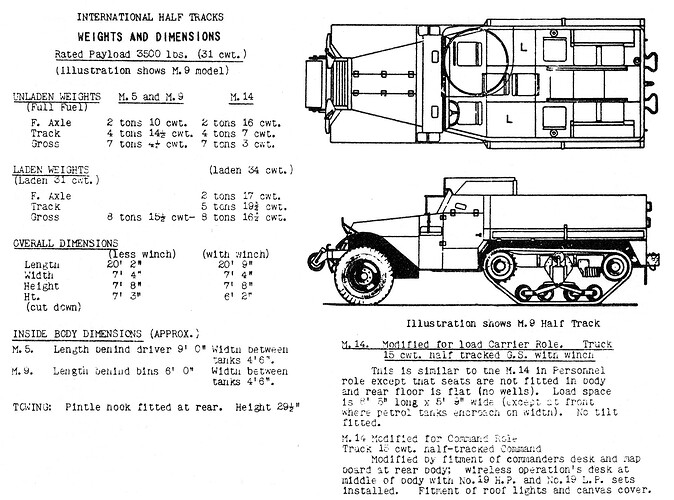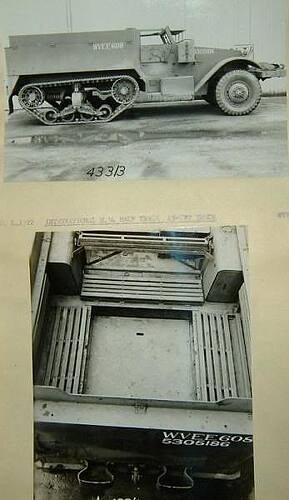As I said: either an M5A1 or an M9A1. The rounded rear corners and the front mudguards that have no downward turn on the sides clearly show it’s an M5-series.
However, you cannot tell the difference between an M5A1 and an M9A1 unless you can see the interior, which is almost never the case in wartime photos. If the halftrack has rounded rear corners, no machine gun ring mount, and no folding upper sides, it will be an M5; with folding upper sides and no ring mount it will be an M14 converted to a troop carrier; but with the ring mount it can be an M5A1 or an M9A1.
They used both, but the M5-series formed the large majority because the Americans had standardised on the M3-series for themselves, and handed most of the M5-series to the Allies. (Which doesn’t mean the US never used the M5 at all, though.)
They were used for all sorts of tasks. Officially, in the British Army it was a Truck, 15 cwt., half tracked, G.S. — not a Carrier, personnel, 15 cwt. etc. or something like that.
That probably refers to the M14 halftracks I mentioned above, and which the illustation also does. These were the M5-series vehicle with twin .50-calibre anti-aircraft guns¹ that had been delivered to the UK, but they had no need for AA vehicles, but they did need more infantry carriers. They looked like this:
Notice the folding upper sides to the load bed.
¹ Like the better-known M16, but with only two guns in the turret. The M3-series twin-gun was the M13, the M5-series quad-gun was the M17.

